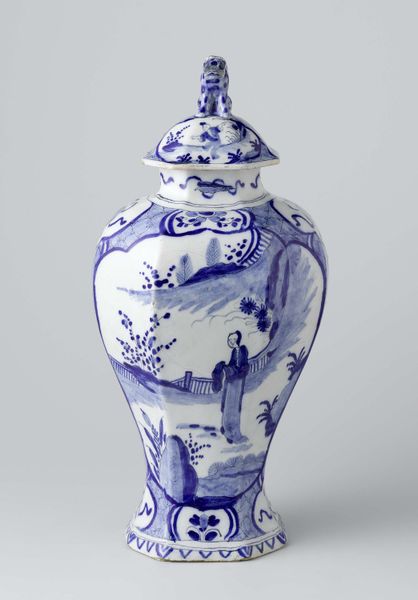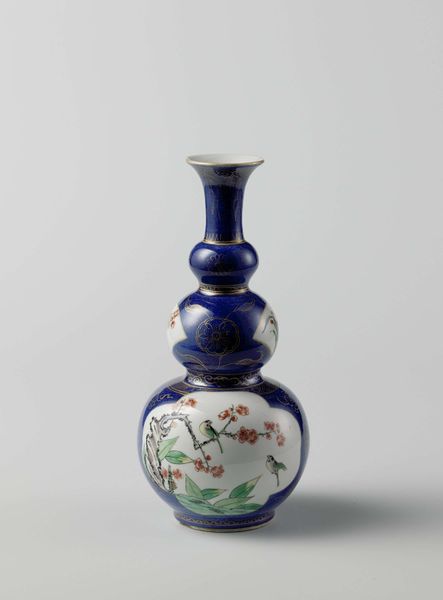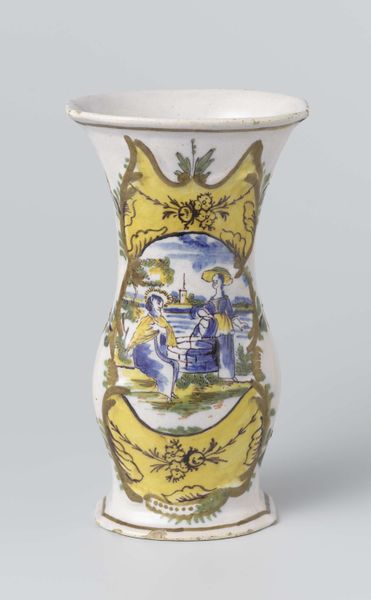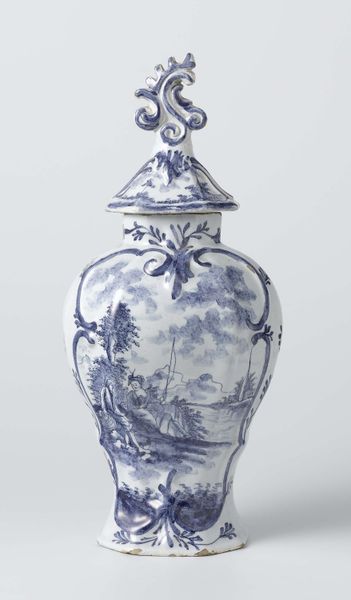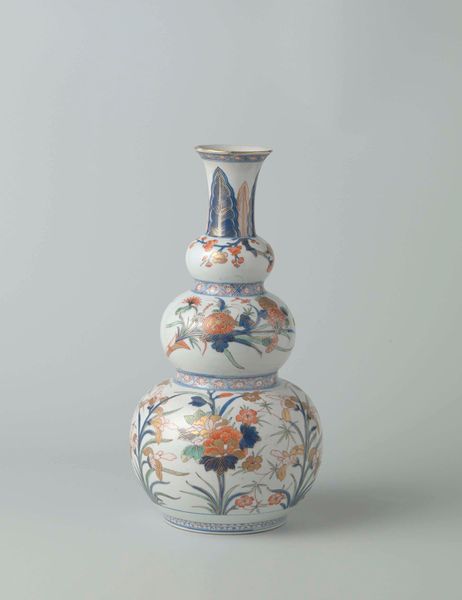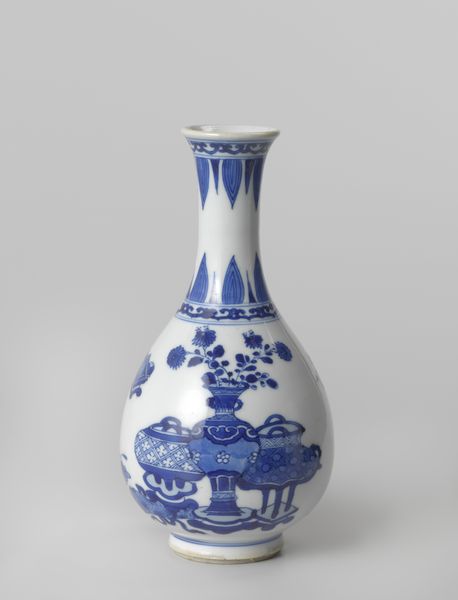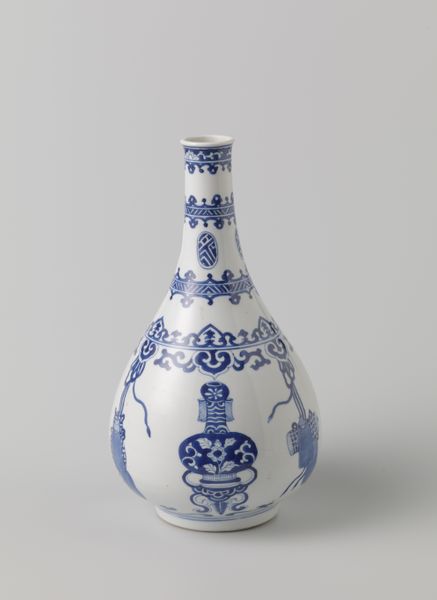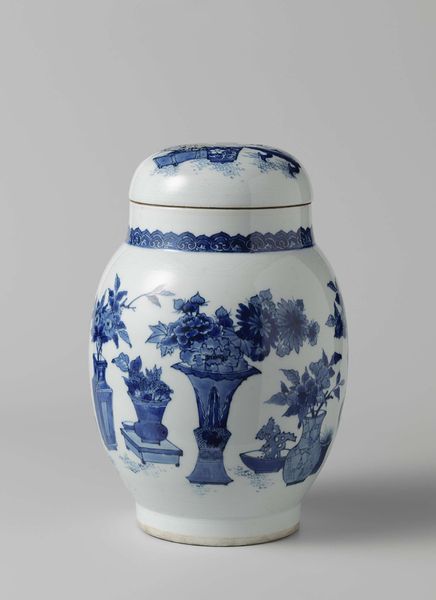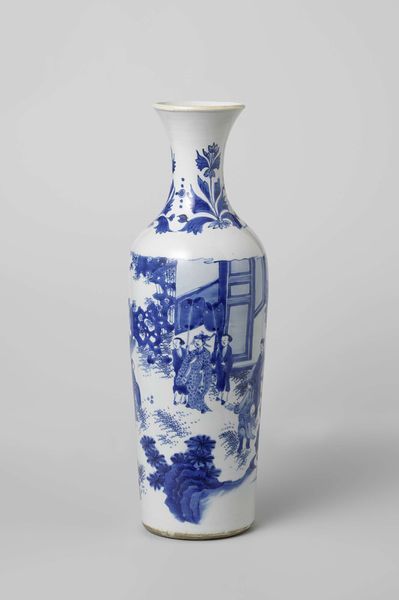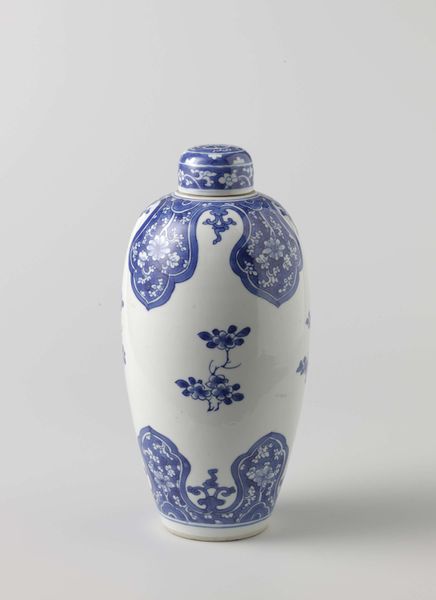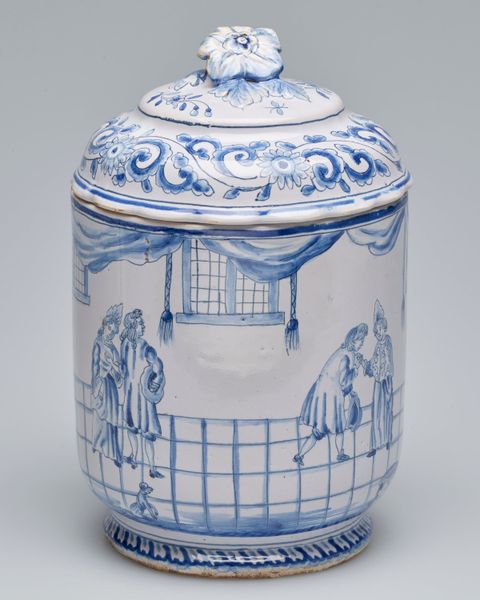
Dimensions: height 11.5 cm, width 9.0 cm, depth 7.8 cm
Copyright: Rijks Museum: Open Domain
This lidded vase was made by De Vergulde Blompot, a pottery in Delft, probably in the 18th century. It’s made of tin-glazed earthenware, and the decoration is painted in a limited palette of blue, yellow, and green. The vase imitates porcelain, an expensive commodity, from the East. Delftware was not just a cheap substitute, but a way for Dutch potters to stake a claim in the global trade, by appropriating Chinese designs. It wasn’t just about copying, though; it was about asserting a Dutch identity in a world of global exchange. The landscapes painted on the vase reflect the values of Dutch society, with a church steeple dominating the skyline, representing the importance of the Protestant faith. These vases can tell us a great deal about the social conditions that shaped artistic production at the time. By studying the historical records of potteries like De Vergulde Blompot, we can better understand the complex interplay of commerce, culture, and artistic innovation in 18th-century Netherlands.
Comments
No comments
Be the first to comment and join the conversation on the ultimate creative platform.

